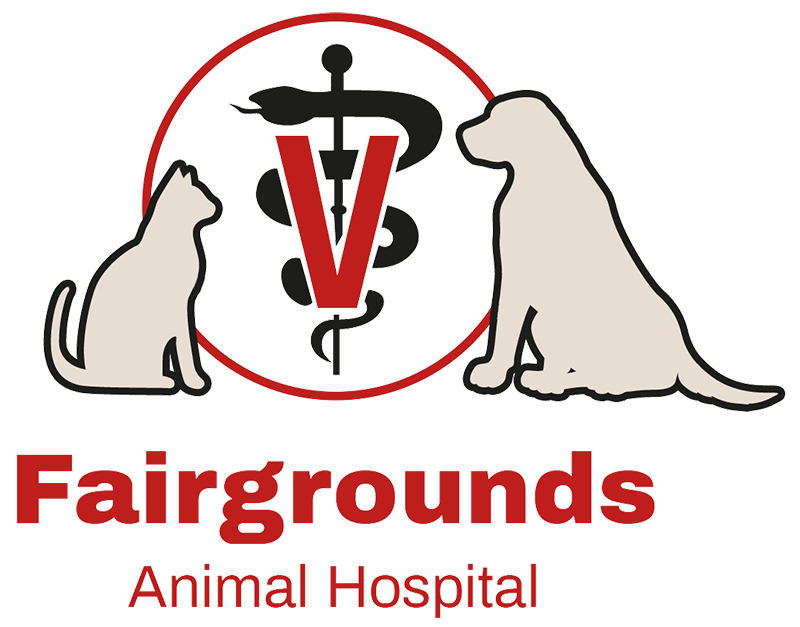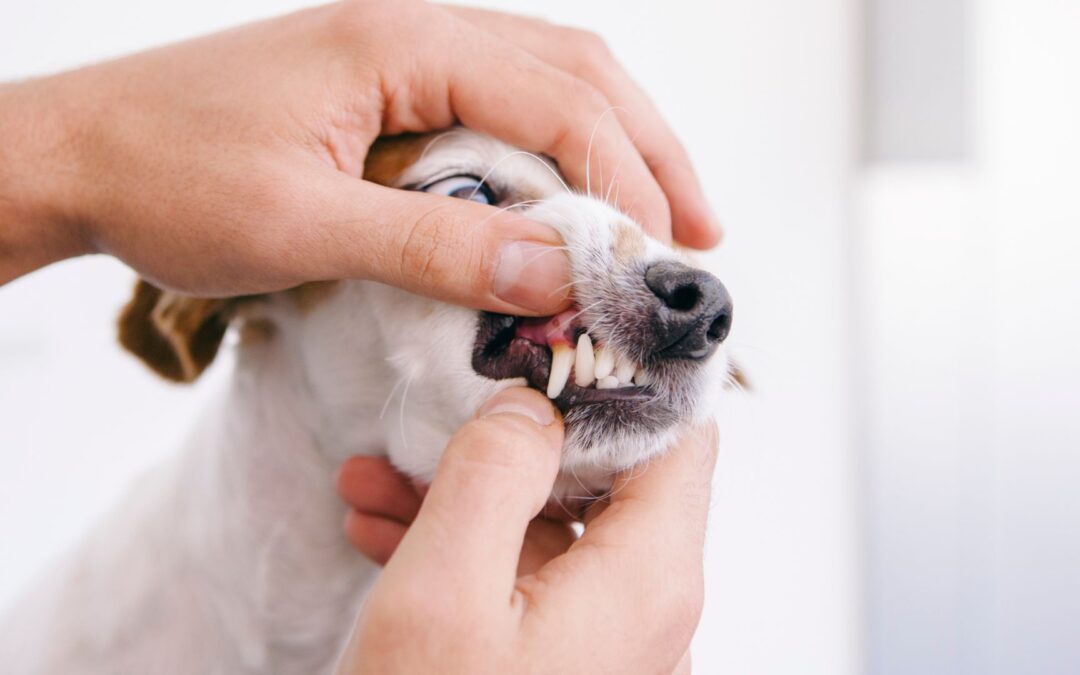The key to the management of gum disease (for humans or pets!) is prevention.
As long as the surfaces of the teeth are cleaned frequently, the gums will typically stay healthy. Excellent oral health is maintained by a daily home oral hygiene routine. The gold standard is brushing. Daily chewing activities can also help maintain oral health. Daily use of products that have been awarded the VOHC Seal for approved products (https://vohc.org/accepted-products/) will help to keep your pet’s teeth clean and the gum tissues and bone around the roots healthy.
VOHC recommends periodic veterinary examinations of the mouth and teeth of your dog or cat. Many pets, particularly middle-aged and older cats and dogs, require periodic professional scaling with extraction of teeth too diseased to salvage, in addition to ongoing plaque control.
Tips for Home Dental Care for Dogs
Home dental care for your dog can make a tremendous difference in their comfort and health. The key is patience while determining which products and approaches your pet will accept and which you can reliably incorporate into a daily, if possible, routine. There are a wide variety of home care options from which to choose, but keep in mind that anything you can do to help prevent plaque and tartar accumulation will pay back big dividends. The more dental care you can do at home for your pet (brushing daily is recommended, at least 4-5 times a week will make a tremendous impact), the less that will have to be done by a veterinarian.
Below we have listed the common forms of home care that have been proven to be of benefit for dogs. Frequently the best approach is to combine several methods of control to achieve the best results. All methods of home care share the goal of minimizing plaque (bacterial film) accumulation and preventing the mineralization of the plaque to form calculus (“tartar”). This list is not exhaustive but contains those things that our team has found to be of value in our dental practice. Please consult with us for other ideas.
BRUSHING:
Brushing your dog’s teeth is the single most effective means to curtail dental disease. This makes sense because the bacterial film known as “plaque” is the root of many dental problems. This film is easily displaced by simple mechanical disruption as the teeth are brushed. Daily brushing is required to improve dental health while brushing every other day will help maintain dental health in its current state. Almost all pets will eventually accept brushing. The key to success is to be patient and gradual in your approach, brushing mainly the outsides of the “cheek teeth”. A pet that resists brushing frequently does so because they have painful areas in their mouth that need to be addressed. We recommend CET enzymatic toothpaste – it is pet-safe and comes in several flavors such as poultry, beef, malt and mint. Other approved toothpaste and gel options can be found on the VOHC-approved products website (https://vohc.org/accepted- products/). Avoid human toothpastes as they usually contain abrasives and detergents that can be irritating if swallowed or xylitol as a sweetener which can cause severe and often fatal liver disease in dogs. Specific veterinary toothbrushes are very soft and angled to assist in brushing the back teeth. Silicone finger brushes are also available and very effective.
CHLORHEXIDINE ORAL RINSE:
This rinse provides antibacterial benefits lasting up to 12 hours. It is safe for pets and rarely causes any problems. The rinse is applied by squirting a small amount inside the cheek on each side of the mouth. The chlorhexidine binds to the oral tissues, tooth surfaces, and existing plaque, and is gradually released into the oral cavity. Some pets may object to the taste of the product.
OXYFRESH ORAL HYGIENE SOLUTION:
Oxyfresh in drinking water helps to improve the breath and detoxify certain bacterial products that can interfere with the healing of oral tissues. Follow the product’s directions for how much of the solution should be added to your pet’s water. There are numerous other water additive options listed on the VOHC-approved products site (https://vohc.org/accepted-products/).
CHEW TYPE PRODUCTS:
Anything that helps increase chewing can be of benefit. To the surprise of many owners, feeding exclusively dry food is of little benefit.
Several specific diets have been shown to be of benefit in decreasing dental disease. Science Diet T/D and Science Diet Oral Care are both “mesh-type” diets that scrub the teeth with a fibrous mesh as your pet eats. Acceptance of these mesh-type foods varies from pet to pet. Friskies Dental Diet, and Eukanuba Dental Defense Diet both employ a chemical coating (sodium hexametaphosphate) that safely decreases tartar formation and is well accepted by most patients. “Milk-bone” type biscuits are of little benefit. VOHC-accepted dental chews are recommended.
Other chews: Rawhide chews have been shown to be safe and effective in reducing plaque accumulation. CET rawhide chews contain a dual-enzyme system that improves their effectiveness compared to plain rawhide chews. Kongs are firm rubber toys that come in a variety of sizes and shapes and can be useful if your pet likes gnawing on a Kong after you coat it with VOHC-approved enzymatic toothpaste. Some of the Kongs allow you to place cheese or peanut butter inside to improve acceptance. The flexible “Gummi-bones” produced by the Nylabone company are safe for most dogs. Greenies, MilkBone Brushing Chews, or other VOHC-approved products are safe and help with reduction in plaque and calculus if the pet actually chews it and they are given daily.
Hard chew toys do help in decreasing dental calculus but are associated with an increased incidence of broken teeth. Although touted as being part of a natural diet, dogs that are given hard chew products usually end up with painful dental fractures, which can expose the nerves of the teeth. The dogs end up with an abscessed tooth. Since they do not typically complain about it or act any differently, these can go unnoticed for many years, leaving your pet in chronic discomfort. Wild dogs, such as wolves, also suffer the same dental fractures. They have no choice but to live with the pain. Fortunately, you can avoid most dental fractures in pets by controlling what they have access to.
We do not recommend antlers, cow hooves, thick pig ears, natural bones, or hard Nylabones. These are all harder than teeth and are frequently associated with broken teeth. Ice cubes are also harder than teeth and can cause painful dental fractures.
Please note:
All chew toys require that you monitor your pets while they are using the product. Never leave pets unattended while they are enjoying any chew toy. Some dogs tend to swallow large pieces of whatever you give them to chew on. These dogs should be closely monitored, and the pieces of the toys should be discarded as they break them apart. Some experimentation is required, but you should be able to find chew toys that work well for your individual dog.
Adapted from: Home Dental Care for Dogs accessed 6 JAN 25
And VOHC https://vohc.org/ Accessed 12 JAN 25

